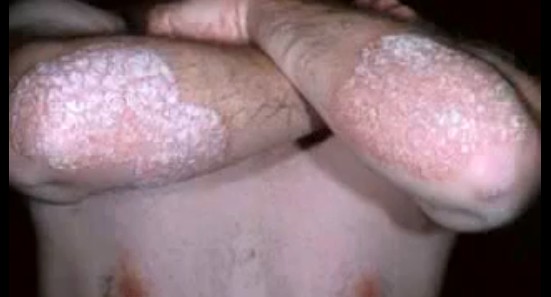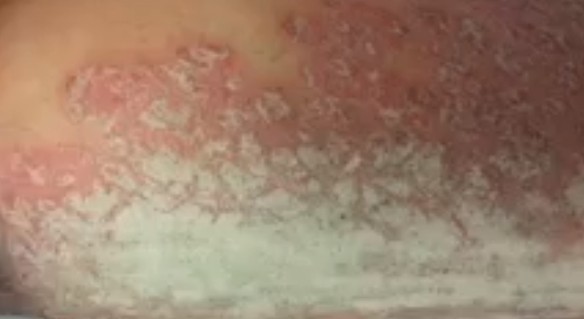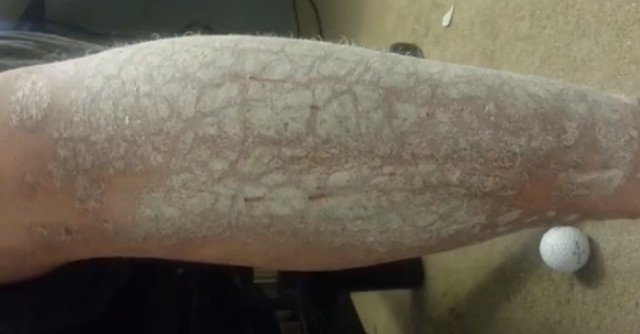Plaque psoriasis is a skin condition, which causes circular to oval red plaques on the skin and scalp. This plaque forms scales because there is epidermal hyperproliferation as well as dermal inflammation. This skin condition can cause acute flare-ups and relapses of plaque that can advance to a more serious health complication such as erythrodermis or pustular psoriasis. About 10 to 20 percent of people with plaque psoriasis also suffer from psoriatic arthritis. Plaque psoriasis is chronic, inflammatory, and relapsing skin condition that has a strong genetic relation. Although the condition is rarely life threatening, it can be very difficult to treat.
Causes of plaque psoriasis
Although it is not known what causes this condition, researchers believe that there is a link between plaque psoriasis and the immune system, genetic, and environmental factors. The immune system triggers a response, which causes the skin cells to grow rapidly and deposit on the skin causing scales.
In a normal skin, it may take about 28 to 30 days for the skin cells to mature and shed off from the body. However, with plaque psoriasis, it may take only 3 to 4 days for the skin cells to form and mature. In this case, the skin cells to do not fall off the surface of the skin. They continue building on the surface and form lesions.
Certain mutation of genetic material can pave way for the development of this skin condition. There may be more than one mutation of genes occurring in more than one gene. If a person inherits these genes, environmental factors like injury, trauma, bacterial or viral infection may trigger the condition.
What are the signs and symptoms of plaque psoriasis?
A person with plaque psoriasis may have raised and easily palpable lesions. This occurs due to the thickened epidermis and the expanded dermal vascular compartment. The skin condition forms irregular to oval skin lesions that are one to several centimetres. The lesions are well defined and have sharp demarcated boundaries.
Moreover, the lesions are red and may show a blue or violaceous hue. The skin is dry, thin, and sliver white forming micaceous scales. The scales occur on the limbs, trunk, and scalp and tend to occur on the elbows and knees. The scaly red bumps or lesions join and form elevated plaque on the skin. These plaques are itchy and may not affect most of the skin surface.
Diagnosis of this skin condition is based on the appearance of lesions and the way in which they form the plaques. Distribution of the plaques on scalp, knees, and elbows is also examined. Skin biopsy may be applied to diagnose the plaque but this procedure is mainly reserved for examination of atypical cases and in excluding other conditions if there is uncertainty in the diagnosis.
Psoriasis can also affect the nails of the fingers and toes causing symptoms that look like a fungal infection. The condition rarely affects the mouth and lips. In children, this plaque psoriasis condition may not cause as thick lesions as would happen for adults. The lesions in children are less scaly and they appear in area around the diaper region and the flexural area. In children, the condition affects the face than it does in adults.
Treatment of plaque psoriasis
This condition has no cure and therefore the treatment is aimed at relieving the symptoms. The condition is characterized by remissions and exacerbations, which may occur spontaneously. Although the condition is incurable, treatment can enhance the wellbeing of the patient. While localized and mild psoriasis may require topical medications, on the other hand, the more extensive and serious form of the condition needs systemic and aggressive treatment.
Systemic treatment is helpful if topical and phototherapy treatments have not shown any positive results. This mode of treatment is also considered in patients that show active psoriatic arthritis. There are different types of medications available to treat the symptoms of this skin condition and they include topical steroid. Ultraviolet light may be administered in a controlled way to treat the skin condition.
Systemic therapies such as use of vitamin A drugs including acitretin may be used. When there are flare-ups as may happen out of environmental triggers like stress, short-term medications like cyclosporine may be used. Biological therapy is rather a new way of treatment of the condition and it provides selective, systemic, and immunologically based interventions.
These treatments can target the activated T cells and prevent further activation of cells or eliminate pathologic T cells. These drugs can also inhibit the interactions, which lead to activation of T cells. The biologics are unique in that they target specific functions of the immune system such as the T cells activation and they can block the pathways that lead to activation of these immune system cells.
Therefore, these medications are termed as safer and have improved efficacy in management of plaque psoriasis. The best way to prevent the condition is by treating the skin with care and avoiding any traumatic stimulation that could trigger the symptoms such as sunburns and elective surgery procedures. It is also recommended that you avoid rubbing and picking the scales off the skin.
Plaque Psoriasis pictures



